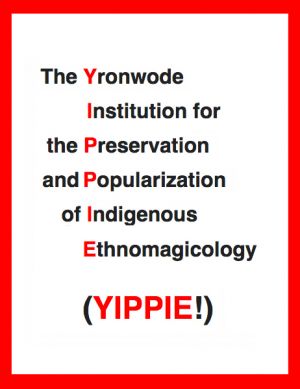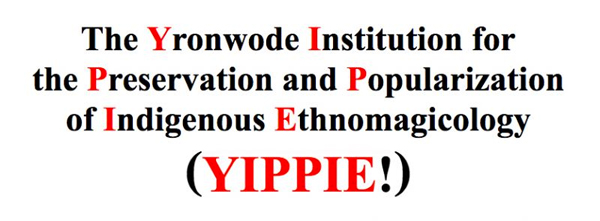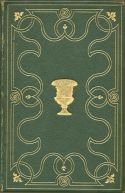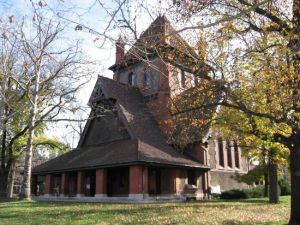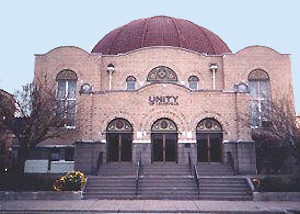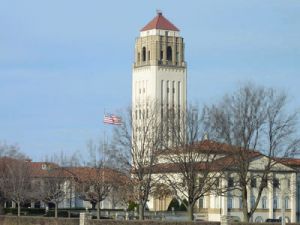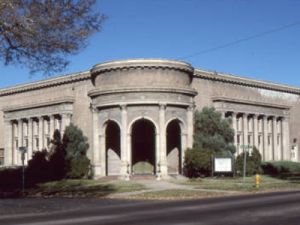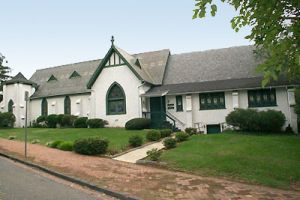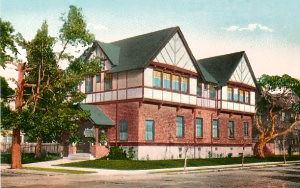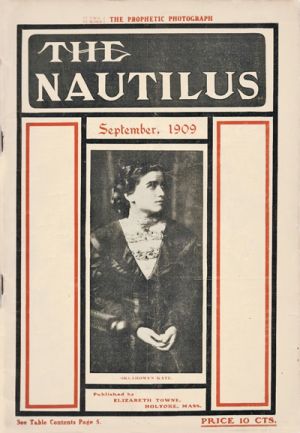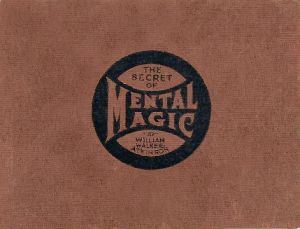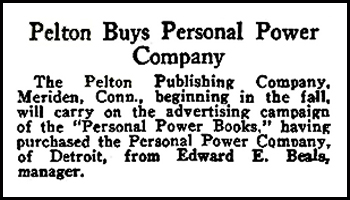New Thought Bibliography
New Thought Bibliography by catherine yronwode
On the 100th anniversary of the publication of the twelve-volume "Personal Power Books" course in self-mastery by William Walker Atkinson and Edward E. Beals, we take a sneak-peek look at how my New Thought Bibliography at the Yronwode Institution for the Preservation and Popularization of Indigenous Ethnomagicology website will look in one year, when the revised, expanded, updated, and illustrated edition will eventually be on display to the public. As a Patreon supporter, you have access to the page one full year before the public does.
- Patreon Release Date: February 7th, 2022.
- Public Release Date: February 7th, 2023.
Please tell your friends that they can subscribe to my Patreon stream for $2.00 per week:
To discuss this and other YIPPIE pages with me, join my private Patreon Forum here:
Support YIPPIE
All of the material you have access to here — the historical information researched and shared from the mind of the woman who is making it all happen — can easily fit into one 8 x 10 foot room in an old Victorian farmhouse, but you would never see it without the investment of the time it takes to produce such a site and the caloric input such a site requires in the form of food for the writer, graphic designer, and database manager, as well as the US currency needed to pay for the computers, software applications, scanners, electricity, and internet connectivity that bring it out of that little room and into the world. So, as you can see, this site is the darling of many, and it is growing at a rapid rate ... but although it is "free," there also is a cost. Your financial support underwrites this cost.
Each new web page or sample pdf is circulated to Patrons as an unpublished galley proof or advance copy. After one year access for Patrons, each web page will be released to the public, while book pages will be available to the public as printed books, and copies will be sent to Patrons who subscribe at the upper two tiers.
Patrons have access to a Private Patreon sub-forum within the Lucky Mojo Forum, and will be accorded special Red Star Avatar badges at the Forum.
New Thought Bibliography
compiled by catherine yronwode
catherine yronwode and the Yronwode Institution for the Preservation and Popularization of Indigenous Ethnomagicology
(Y.I.P.P.I.E.)
The New Thought Bibliography is copyright 2007-2022 by catherine yronwode and the Yronwode Institution for the Preservation and Popularization of Indigenous Ethnomagicology (Y.I.P.P.I.E.), and all rights are reserved. In other words, you may download The New Thought Bibliography and print it out at home for your own use, but you may not further copy it, because the author controls the copying rights. Specifically, you may not mirror The New Thought Bibliography to other web sites, you may not distribute it or publish it in print form (either for money or for free), and you may not electronically distribute it in e-lists or usenet (either for money or for free) without the express written permission of the copyright holder.
The focus of this bibliography is on New Thought books, pamphlets, and magazine articles written during the 100-year period from 1870 - 1970, with an emphasis on books published prior to 1950, and most particularly on non-denominational texts that deal with the secular or philosophical subjects of healing, self-help, will power, thought control, self-mastery, success, affirmative prayer, metaphysics, divination, clairvoyance, and occultism.
The Bibliography is organized alphabetically by author's last name
A B C D E F G H I J K L M N O P Q R S T U V W X Y Z
Introduction: A History of the New Thought Movement
Note: This introductory article is co-copyright by me, catherine yronwode; The Association of Independent Readers and Rootworkers (AIRR), for whom i wrote the text; and YIPPIE. The article appears at the AIRR website in fully interlinked form, linking to dozens of other AIRR pages, but the Bibliography itself does not appear at AIRR, only here. I realize that some of my Patrons may have read it before. If you have, you can just SKIP TO THE NEW LISTINGS
For the convenience of my Patrons, all material to be added to the public New Thought Bibliography in 2023 is in purple writing.
The earliest proponent of what was originally called Mental Science and later came to be known as New Thought was Phineas Parkhurst Quimby (1802 - 1866), an American philosopher, mesmerist, healer, and inventor. Quimby cured himself of chronic illnesses through thought alone and in doing so he came to believe that illness originates in the mind as a consequence of erroneous thoughts and that a mind open to Truth can overcome illness and achieve renewed health. Generally described as a theist, Quimby was not himself the leader of a religious movement, but his teachings led to the development of the New Thought Movement within Protestant Christianity.
During the latter half of the 19th century, New Thought came to resemble a twin-trunked tree. one trunk housing an array of philosophical, metaphysical, secular, magical, and non-theological authors, and the other trunk inhabited by religious and clerical adherents of New Thought. The theological trunk was further subdivided into two main branches, The Church of Christ Scientist (also known as the Christian Science church) on the one hand, and, on the other, three major religious groups that identified as New Thought denominations, namely Religious Science, Unity Church, and the Church of Divine Science.
Secular and Metaphysical New Thought
 The Crystal Silence League, founded in 1919 by the New Thought author C. Alexander, provides free prayer services for all who request them
The Crystal Silence League, founded in 1919 by the New Thought author C. Alexander, provides free prayer services for all who request them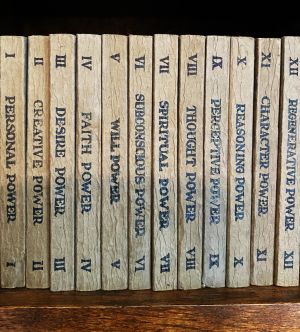 The New Thought Movement was supported by a prodigious output of books in which popular authors taught its theories and promoted the concept of spiritual self-help though reading and personal practice; The Personal Power Books is a twelve-volume series of this type, totally 2,304 pages, written by William Walker Atkinson and Edward E. Beals, and published in 1922
The New Thought Movement was supported by a prodigious output of books in which popular authors taught its theories and promoted the concept of spiritual self-help though reading and personal practice; The Personal Power Books is a twelve-volume series of this type, totally 2,304 pages, written by William Walker Atkinson and Edward E. Beals, and published in 1922Secular New Thought
Phineas Parkhurst Quimby, the founder of the New Thought Movement, was a non-religious theist, and his teachings attracted many adherents whose interests were in New Thought as a philosophy, a method of regaining health, a system of metaphysics, or even an occult practice. Unlike religious New Thought, which is marked by the building of beautiful churches, non-religious New Thought is primarily a movement built upon books. From the 1890s to the present, New Thought authors such as Elizabeth Towne, William Walker Atkinson, Orison Swett Marden, Frank Channing Haddock, Wallace Wattles, and Napoleon Hill have written and published a wide array of uplifting, instructive, and insightful volumes for students.
The ideas these writers have promoted are widely known in American popular culture — and have made their way into a variety of religious movements as well. Many of these New Thought concepts are known by the titles of the books in which the ideas were first set before the public: The Law of Attraction, Personal Power, Think and Grow Rich, The Power of Concentration, Self Mastery, Conscious Autosuggestion, Personal Magnetism, The Master Key, Will Power -- all of these are titles or partial titles of secular, occult, or metaphysical New Thought books. Their effect upon modern society has been incalculable, and, through digitization, they continue to be read and studied by millions of people who wish to better themselves and more fully enjoy their lives.
Metaphysical New Thought
The metaphysical wing of the New Thought Movement includes varying forms of magical practices. Each New Thought teacher is free to select from among the many occult, esoteric, and magical traditions, and no one practice may suit all, but the most commonly encountered metaphysical concepts found within this form of New Thought are a belief in some form of divination (crystal ball reading is particularly favoured), and a belief in the efficacy of psychism and mental influence.
Metaphysical New Thought writers are quite varied in their approaches, but in a text like "The Science of Mental Magic" by William Walker Atkinson, we see a close approach to the type of non-theological mind-power techniques that many traditional folkloric practitioners employ in their spell-casting.
Gender Identity in the New Thought Movement
Although most of the early non-theological and secular New Thought authors, such as William Walker Atkinson, Claude Alexander Conlin, Napoleon Hill, Wallace Wattles, Perry Joseph Green, Frank Channing Haddock, Edward E. Beals, Orison Swett Marden, and Thomas Troward, were male, many of the religious New Thought proponents were female; notably Mary Baker Eddy, Emma Curtis Hopkins, Myrtle Fillmore, Malinda Cramer, Annie Rix Militz, and Nona L. Brooks.
There were, of course, authors who crossed this retrospectively-perceived gender-line: Elizabeth Towne, for instance, wrote secular New Thought books and ran a publishing house which released dozens of metaphysical, and health-oriented New Thought works; both Ernest Holmes and Charles Fillmore, on the other hand, were associated with the religious New Thought Movement. However, because female New Thought authors tended toward more religious expressions than their male counterparts, quite a few New Thought churches and community centers have been led by women, from the 1880s to the present.
Judeo-Christian New Thought Denominations
Because most of the early adherents of the New Thought Movement, even those who identified as secular, theistic, or metaphysical, had been raised within Protestant Christianity, those who developed religious traditions within the New Thought Movement tended to build their theology in accord with existing Jewish and Christian cosmological, moral, and spiritual teachings.
Christian Science
Mary Baker Eddy, the founder of Christian Science, was a patient of Phineas Quimby’s and shared his New Thought view that disease is rooted in mental causes over which human beings exercise a greater or lesser degree of control. Eddy went on to found the Church of Christ Scientist, the most overtly Christian of the New Thought denominations, basing its doctrine upon teachings in the Bible. However, by the time she wrote her own book, Science and Health with Key to the Scriptures, her cosmology and her approach to healing had grown quite distant from Quimby's. Eddy preached that the universe is spiritual and good in nature, rather than material and evil, and according to her interpretation of the Bible, all good is real and all evil is unreal and illusory. In light of this, sin, illness, and diseases are seen as unreal and curable through prayer.
In Christian Science, prayer is not seen as petition to God seeking intervention, but rather as a contemplative process awakening true understanding of reality and recognition of the spiritual nature of the universe. The act of recognition and understanding of reality then banishes the illusory disease. Members of the Christian Science church utilize a special form of prayer over medication and surgery as the latter two are viewed as being material in nature.
There is no concept of eternal punishment in Christian Science and Jesus the man is often distinguished from the Christ or anointed one. Because Christ is considered purely spiritual, only Jesus as a physical person can carry the Christ. Similarly, the mainstream concept of God the Father is viewed as Father and Mother. In these and other ways, Christian Science differs from most mainstream Christian beliefs.
Unity
In 1889 the husband and wife team of Charles and Myrtle Fillmore founded Unity in Kansas City, Missouri. Although Unity describes itself as having no particular creed, no set dogma, and no required ritual, at the present time, the denomination is also known as Unity Church and the Unity School of Christianity.
Unity identifies as "culturally Christian and universally inclusive," meaning that while its primary inspirations are the Jewish Bible, the Christian New Testament, and the teachings of Jesus Christ, its adherents recognize truth in all of the world's sacred scriptures and faith traditions and view each person as a unique expression of the divine energy of God.
The basic ideas that make up the Unity belief system are that God], the source and creator of all, is good and present everywhere; that humans are spiritual beings created in God’s image; that the spirit of God lives within each person and therefore, all people are inherently good; that human beings create their life experiences through their way of thinking; that there is power in affirmative prayer which increases one's connection to God; and that mere knowledge of these spiritual principles is not enough; one must also live by them.
Divine Science
Divine Science grew from the amalgamation of two separate woman-led New Thought groups. The first was started in 1887 in Colorado by three sisters -- Nona Lovell Brooks, Aletha Brooks, and Fannie Brooks James -- and their friend Kate Bingham. Drawing upon the principle of the Omnipresence of God and incorporating practical adaptations of the principles of Christian Science (for instance, adherents were allowed to seek medical help rather than merely relying upon prayer), the women held regular meetings in Pueblo, Colorado to discuss New Thought. Simultaneously, also beginning in 1887, Malinda Cramer, a student of Emma Curtis Hopkins who lived in San Francisco, California, was expounding a similar belief in God as Truth and attracting students to her Home College of Spiritual Science (later known as the Home College of Divine Science). In 1892, Cramer became a co-founder of the International Divine Science Association (now known as the International New Thought Alliance). In 1898, the Colorado and California groups joined together when Nona Lovell Brooks was ordained a minister by Malinda Cramer. The women then founded the Denver Divine Science College to train teachers, organize churches, and ordain ministers and the Divine Science Church of Denver as a place of public worship.
Divine Science teaches the Fatherhood of God as Omnipresent Life, Substance, Intelligence, and Power and advocates the brotherhood of man, the unity of all life, and the Truth that can be found in science, philosophy, and religion. Divine Scientists do not partake of typical Christian rituals such as the sacrament of bread and wine or the use of water for baptisms and christenings; rather, they believe that every process of Life is a sacrament and that, as the Spirit of God is immanent at all times, the sacraments are present at every moment, eternally.
Following both the example and the teachings of Jesus, adherents work on a daily basis, "seeking first the Kingdom of God" and "knowing the Truth that sets men free," as they take charge of their own thoughts, words, and actions, and the power of right thinking releases into expression in each individual life its divine inheritance of health, abundance, peace, and power.
Religious Science
In 1927, Ernest Holmes founded a New Thought denomination known as Religious Science. Blending spiritual, religious, metaphysical, and philosophical beliefs, its doctrines are based upon Holmes' teachings in his 1926 book "The Science of Mind." Holmes did not found the organization as a church, but as a teaching institution, with "centers" rather than "churches," but a belief in deity is central to its tenets. This deity is identified as "Spirit Almighty; one, indestructible, absolute, and self-existent Cause."
There are three major organizations to which adherents of Religious Science belong: the Centers for Spiritual Living, the Affiliated New Thought Network, and the Global Religious Science Ministries, with centers in Canada, Central America, South America, Africa, Europe, India, Australia, and the Philippines. All of them drawn inspiration from the teachings of Ernest Holmes.
In the United States, Religious Science has been open to teachings from secular and metaphysical sources, as well as Protestant Christian and Spiritualist traditions. Perhaps for this reason, the denomination has attracted many African American adherents, particularly on the West Coast. The beliefs and practices of Religious Science, especially the use of affirmative prayer, have in turn been carried into the African American magical tradition of hoodoo, greatly influencing its development through the 20th and 21st centuries.
Spiritualism and the New Thought Movement
The New Thought Movement developed during the same era that saw the birth of modern Spiritualism, and it was only natural that there would be some exchanges of ideas between the two. While each retains its own distinct culture, there have been New Thought proponents who have espoused Spiritualist and mediumistic beliefs and practices, such as communion with the dead, and there are also Spiritualists who engage in typically New Thought practices, such as affirmative prayer for the purposes of healing.
Spiritualist-Metaphysical New Thought Teachers
Two prominent 20th century teachers who blended mediumistic Spiritualism with secular, philosophical, and metaphysical New Thought were William Walker Atkinson, the author of books such as Psychomancy and Crystal Gazing]] and How to Develop Mediumship; and Claude Alexander Conlin, the founder of the Crystal Silence League. Conlin in particular, writing under the name C. Alexander, taught both mediumship and seership to his students in his New Thought book "The Crystal Silence League: Personal Codes, Lessons, and Instructions for Members."
The Association of Independent Spiritual Churches
Missionary Independent Spiritual Church, founded in 2006 by the husband and wife team of catherine and nagasiva yronwode, was the founding body of the Association of Independent Spiritual Churches, Eclectic Spiritualist denomination that incorporates many aspects of the New Thought Movement. In fact, its founders have said that as an interfaith organization, it may almost equally be considered to be a New Thought church that incorporates the practices of Spiritualism. Other interfaith churches of this eclectic type are Divine Harmony Spiritual Church and Four Altars Gospel Sanctuary
These churches and similar ones within the Association of Independent Spiritual Churches denomination make use of affirmative prayer in combination with spirit mediumship, ancestor veneration in the African American tradition, and contact with the dead and with spirit guides. Church ministry services may also include the recitation of Biblical Psalms and the setting of vigil lights for positive outcomes to prayer.
Hinduism and the New Thought Movement
During the late 19th century, gurus, swamis, and other teachers from India began to tour America, lecturing on Hinduism, Vedanta, and yoga. Their impact upon the New Thought Movement was greatest in the secular and metaphysical branch of the movement, but at least one small New Thought denomination on the West Coast, The Home of Truth, embraced South Asian philosophy, and placed Vedanta and yoga on a par with Christianity, crafting from the blend a truly interfaith form of New Thought religion.
Hindu-Metaphysical New Thought Teachers
The secular New Thought author William Walker Atkinson, a student of Emma Hopkins Curtis and a prolific writer and journalist in his own right, attended the 1893 Parliament of Religions (also known as the First World Conference on Religion), which was held in Chicago, Illinois at the World's Columbian Exposition. What he encountered there led him to study Hindu traditions extensively from primary sources. Under a series of Indian-sounding pseudonyms, such as Swami Bhakta Vishita, Yogi Ramacharaka, and Swami Panchadasi, he wrote a series of credible and generally well-received introductory books on the topic for Americans, including Reincarnation and the Law of Karma (1908) and The Hindu-Yogi Science Of Breath (1904). Like his contemporary, Annie Rix Militz, Atkinson often cross-referenced Protestant Christianity with his understanding of Hinduism, blending their mingled streams into his openly eclectic New Thought teachings.
The Home of Truth
The Home of Truth was founded by Annie Rix Militz and Harriet Hale Rix, two sisters from northern California who were students of the New Thought teacher Emma Curtis Hopkins. The Rix sisters had entered New Thought from a Protestant Christian background and had formerly been associated with Mary Baker Eddy's Christian Science, with Charles and Myrtle Fillmore's Unity, and with the female suffrage movement. Annie Rix Militz was the founder of the West Coast Metaphysical Bureau, a group that studied comparative religious teachings in the light of New Thought metaphysical philosophy. She also served a term as the president of the International New Thought Alliance and was the editor of Master Mind Magazine.
In 1893, at the Parliament of Religions in Chicago, Annie Rix Militz met swami Vivekananda, an Indian-born teacher in the Vedanta]] tradition. Impressed with his message, she sponsored a lecture tour for him in the San Francisco Bay Area, where he remained for one month and spoke to thousands of New Thought adherents. Through Vivekananda's outreach, Hindu]] theological concepts were incorporated into the writings and teachings of the Rix sisters, and thus their denomination, The Home of Truth, became inclusive, interfaith, and eclectic in outlook.
The influence of Hinduism in the Home of Truth denomination went beyond eclecticism in theology and worship. Embracing the Hindu concept of ahimsa (non-harm), Annie Rix Militz also became an outspoken advocate for the worldwide peace movement during World War One, a time when such beliefs were neither popular nor widespread. This emphasis on compassion and social progressivism continues to form a strong current within the Home of Truth.
Bibliography
The Bibliography is organized alphabetically by author's last name
A B C D E F G H I J K L M N O P Q R S T U V W X Y Z
== A ==
James Allen. As a Man Thinketh [many editions, of which this is one] Sheldon University Press. 1909.
C. Alexander [Claude Alexander Conlin]
C. Alexander. The Inner Secrets of Psychology Vol. 1: Creative Thought-Power. C. Alexander Publishing Co. 1924.
- Preface
- Lesson I: The Wonderland of Nature
- Lesson II: Nature's Finer Forces
- Lesson III: Thought-Waves and Currents
- Lesson IV: The Secret of Concentration
- Lesson V: The Secret of Visualization
- Lesson VI: Crystals and Crystal-Gazing
- Lesson VII: Mental Influence
- Lesson VIII: Thought-Attraction
- Lesson IX: Applying the Power
- Lesson X: Words to the Wise
C. Alexander. The Inner Secrets of Psychology Vol. 2: Personal Magnetism. C. Alexander Publishing Co. 1924.
- Preface
- Lesson I: Personal Magnetism
- Lesson II: Positive Magnetism
- Lesson III: Developing Positive Magnetism
- Lesson IV: Preliminary Exercises
- Lesson V: The Power of the Eye
- Lesson VI: The Magnetic Hand and Voice
- Lesson VII: Magnetic Personality
- Lesson VIII: Magnetic Appearance
- Lesson IX: Magnetic "Manners"
- Lesson X: Some Magnetic "Little Things"
(there are a total of five volumes in this series)
C. Alexander. Personal Lessons, Codes, and Instructions for Members of the Crystal Silence League: A Concise and Comprehensive Treatise Embracing Proper care of the Body and Development of the Inner or Mental Powers. C. Alexander Publishing Co. n.d. (c. 1921)
- Mental Treatment Course
- Instructions for Thought and Codes for healing
- Instructions for Developing Your Spiritual Aura
- Instructions for Developing Your Psychic Intuition
- Personal Analysis Index
- Joy Road to Health
- Special Lecture
- Sex Force
- Mind Power
- Personal Magnetism
- Winning Personality
- Dynamic Thought
- The Master Key
For ease of study, the works of William Walker Atkinson are divided into sections based on the name or pseudonym Atkinson chose to place on the title page of each work cited.
Bibliography of Atkinson writing as W. W. Atkinson
W. W. Atkinson. "Attainment with Honor", an article in "The Nautilus" magazine. June 1914.
W. W. Atkinson. Dynamic Thought or the Law of Vibrant Energy. The Senogram Publishing Company. 1906.
W. W. Atkinson. Human Nature: Its Inner States and Outer Forms. The Progress Company, Chicago. 1910. Hardcover. 202 pages. Reprinted as How to Read Human Nature: Its Inner States and Outer Forms. The Elizabeth Towne Co. 1913. This book deals with character analysis and character reading by means of phrenology and other physical characteristics. It also covers the topic of intelligence and the psychological, emotional, and moral traits of human beings, and the traces they leave on the physiognomy.
W. W. Atkinson. The Law of the New Thought: A Study of Fundamental Principles and Their Application. The Psychic Research Company. 1902. Also L.N. Fowler & Co., 1912
W. W. Atkinson. Mastery of Being: A Study of the Ultimate Principle of Reality & the Practical Application Thereof. 1911
W. W. Atkinson. Memory Culture: The Science of Observing, Remembering and Recalling. Psychic Research Co. 1903. Reprinted by the Yoga Publication Society, Desplaines, Illinois, 1976.
W. W. Atkinson. Memory: How to Develop, Train, and Use It. c. 1911. Reprinted by The Elizabeth Towne Co., Holyoke, Massachusetts, 1916. 206 pages.
W. W. Atkinson. Mental Fascination. [Unknown Publisher], 1907. Also L. N. Fowler ,1909. 253 pp plus advertisements.
W. W. Atkinson. "Mental Pictures", an article in "The Nautilus" magazine. November 1912.
W. W. Atkinson. Mind and Body or Mental States and Physical Conditions. The Progress Company, Chicago, 1910. 210 pages.
W. W. Atkinson. Mind-Power Or, The Law of Dynamic Mentation. Progress Company / L.N.Fowler, 1908. 441pp. Reprinted as Mind-Power: The Secret of Mental Magic. Advanced Thought Publishing Co., Chicago. 1012 / Yogi Publication Society, 1912. / L.N Fowler, London, 1912. Reprinted 1940. Reinted by the Yoga Publication Society, 1970. br>
W. W. Atkinson. Mystic Christianity, Or the Inner Teachings of the Master. Yogi Publication Society, 1935. [Due to the posthumous date of publication, this is eaither a reprint or a book attributed to Atkinson.]
W. W. Atkinson. New Psychology Its Message, Principles and Practice. 1909.
W. W. Atkinson. Nuggets of the New Thought: Several Things That Have Helped People. Sydney Flower. 1902.
W. W. Atkinson. Practical Mental Influence. 1908.
W. W. Atkinson. Practical Mind-Reading
W. W. Atkinson. Practical New Thought: Several Things that Have Helped People. 1911. W. W. Atkinson. The Psychology of Salesmanship. The Progress Company, Chicago, Illinois, 1910. The Elizabeth Towne Co., Holyoke, Massachusetts, 1912. W. W. Atkinson. The Psychology of Success, or Mental Paths to Power. The Progress Company, Chicago, 1910. 233 pages plus advertisements.
W. W. Atkinson. Psychomancy and Crystal Gazing, a Course of Lessons on the Psychic Phenomena of Distant Sensing, Clairvoyance, Psychometry, Crystal Gazing, etc. Advanced Thought Publishing Co. Masonic Temple, Chicago. 1907. Yoga Publication Society, Desplaines, Illinois, 1975.
- Lesson I The Nature of Psychomancy
- Lesson II How to Develop Yourself
- Lesson III Simple Psychomancy
- Lesson IV The Astral Tube
- Lesson V Psychometry
- Lesson VI Crystal Gazing
- Lesson VII Astral Projection
- Lesson VIII Space Psychomancy
- Lesson IX Past Time Psychomancy
- Lesson X Future Time Psychomancy
- Lesson XI Dream Psychomancy
W. W. Atkinson. Reincarnation and the Law of Karma: A Study of the Old-New World-Doctrine of Rebirth, and Spiritual Cause and Effect. Yogi Publication Society. 1908.
W. W. Atkinson. Secret of Success: Self-Healing by Thought Force. Advanced Thought Publishing Company. 1907.
W. W. Atkinson. Subconscious and Superconscious Planes of Mind. The Progress Company, Chicago, Illinois, 1909. R F Fenno & Company, 1909. 200 pages.
- Infra-Conscious Mentality
- The Maiifold Mind
- Hudson's "Subjective Mind"
- Unconscious Cerebration
- A Remarkable Instance
- The Subconscious Memory
- Typical Cases
- Inherited Memory
- Mental Habit
- The Subconscious and the Body
- Twilight Regions
- The Superconscious
- Unfolding the Superconscious
From a bookseller's description: "In this book, Atkinson keeps his incredible insight on the human mind, analyzing every possible aspect of the subconscious mind, memory, and habits a to arrive to what he calls the superconscious, where all those "possibilities of activities as yet not generally unfolded into actual manifestation" are in storage. He says, 'We have seen that in the Infra Conscious region of the mind there are certain activities which seem to be outside of the category of those which belong strictly to the subconscious-activities which cannot be considered as resulting from the past race or individual experience along the lines of racial memory or heredity, or of the memory of the individual-and yet which do not fit into the category of the "parallel" activities which we have classified as "the psychic." In short these activities seem rather to belong to a higher rather than a lower or even parallel plane of consciousness. The Orientals for centuries have recognized these activities and have classified them as belonging to the "superconscious" plane of mentation-a plane above the ordinary plane of consciousness, just as the subconscious is a plane below it, and the "psychic" plane parallel to it. The superconscious plane is a plane of "above consciousness," just as the subconscious is a plane "below consciousness."' How to develop and unfold the superconscious: that is what Atkinson will try to teach to the minds that are prepared."
W. W. Atkinson. Suggestion and Auto-Suggestion. The Progress Company, Chicago. 1909. Also reprinted 1915.
W. W. Atkinson. Telepathy: Its Theory, Facts, and Proof. 1910.
W. W. Atkinson. Thought-Culture or Practical Mental Training. The Progress Company, Chicago, 1909. 193 pages.
W. W. Atkinson. Thought-Force in Business and Everyday Life. Chicago. 1900; The Psychic Research Company. 1901.
W. W. Atkinson. Thought Vibration or the Law of Attraction in the Thought World. Chicago. 1906.
W. W. Atkinson. Your Mind and How to Use It: A Manual of Practical Psychology. 1911.
Bibliography of Atkinson writing as Yogi Ramacharaka
W. W. Atkinson as Yogi Ramacharaka. Advanced Course in Yogi Philosophy and Oriental Occultism (a.k.a Fourteen Lessons in Yogi Philosophy and Oriental Occultism a.k.a. The Yogi Philosophy). Chicago. 1904.
W. W. Atkinson as Yogi Ramacharaka. The Hindu-Yogi Science Of Breath (a.k.a. The Science of Breath).
W. W. Atkinson as Yogi Ramacharaka. The Hindu-Yogi System of Practical Water Cure.
W. W. Atkinson as Yogi Ramacharaka. Life Beyond Death
W. W. Atkinson as Yogi Ramacharaka. Mystic Christianity.
W. W. Atkinson as Yogi Ramacharaka. The Science of Psychic Healing: A Sequel to Hatha-Yoga.
W. W. Atkinson as Yogi Ramacharaka. Yogi Philosophy, Vol. [?]: Hatha Yoga
W. W. Atkinson as Yogi Ramacharaka. Yogi Philosophy, Vol. [?]: Gnani Yoga
W. W. Atkinson as Yogi Ramacharaka. Yogi Philosophy, Vol. III: Raja Yoga or Mental Development. Yogi Publication Society. 1906. [12 lessons, stated in the publisher's preface to have been published originally as a series of 12 monthly lessons, from October 1905 to September 1906, and to have been collected and issued in book form immediately, in September 1906.]
Bibliography of Atkinson writing as Swami Bhakta Vishita
W. W. Atkinson as Swami Bhakta Vishita. Can We Talk to Spirit Friends?
W. W. Atkinson as Swami Bhakta Vishita. Clairvoyance and Kindred Phenomena.
W. W. Atkinson as Swami Bhakta Vishita. Clairvoyance: Past, Present and Future.
W. W. Atkinson as Swami Bhakta Vishita. Crystal Seering by Seers of All Ages. (Pamphlet)
W. W. Atkinson as Swami Bhakta Vishita. The Development of Seership: The Science of Knowing the Future; Hindoo and Oriental Methods". Advanced Thought Publishing Co. Chicago. 1915)
W. W. Atkinson as Swami Bhakta Vishita. The Difference Between a Seer and a Medium. (Pamphlet)
W. W. Atkinson as Swami Bhakta Vishita. The Future Evolution of Humanity.
W. W. Atkinson as Swami Bhakta Vishita. Genuine Mediumship or The Invisible Powers. Advanced Thought Publishing Co. Chicago. 1910
W. W. Atkinson as Swami Bhakta Vishita. Ghosts of the Living, End of the Dead.
W. W. Atkinson as Swami Bhakta Vishita. The Great Universe Beyond and Immortality.
W. W. Atkinson as Swami Bhakta Vishita. The Higher Being Developed by Seership.
W. W. Atkinson as Swami Bhakta Vishita. Higher Spirit Manifestations.
W. W. Atkinson as Swami Bhakta Vishita. How Is It Possible to Foretell the Future? (Pamphlet)
W. W. Atkinson as Swami Bhakta Vishita. How Seership Develops a Constructive Life.
W. W. Atkinson as Swami Bhakta Vishita. How to Attain Knowledge of the Higher Worlds.
W. W. Atkinson as Swami Bhakta Vishita. How to Cross the Threshold of the Super World.
W. W. Atkinson as Swami Bhakta Vishita. How to Develop Mediumship.
W. W. Atkinson as Swami Bhakta Vishita. How to Develop Psychic Telepathy.
W. W. Atkinson as Swami Bhakta Vishita. How to Distinguish Real Seership from Unreal. (Pamphlet)
W. W. Atkinson as Swami Bhakta Vishita. How to Gain Personal Knowledge of the Higher Truths of Seership.
W. W. Atkinson as Swami Bhakta Vishita. How to Go Into the Silence: The Key of All Life. (Pamphlet)
W. W. Atkinson as Swami Bhakta Vishita. How to Interpret the Present and Future Exactly as They Are Designed to Be.
W. W. Atkinson as Swami Bhakta Vishita. Mediumship.
W. W. Atkinson as Swami Bhakta Vishita. Mental Vibrations and Transmission.
W. W. Atkinson as Swami Bhakta Vishita. The Mystic Sixth Sense.
W. W. Atkinson as Swami Bhakta Vishita. Nature's Finer Forces.
W. W. Atkinson as Swami Bhakta Vishita. Seership and the Spiritual Evolution of Man.
W. W. Atkinson as Swami Bhakta Vishita. Seership, a Practical Guide to Those Who Aspire to Develop the Higher Senses.
W. W. Atkinson as Swami Bhakta Vishita. Seership, the Science of Knowing the Future.
W. W. Atkinson as Swami Bhakta Vishita. The Spiritual Laws Governing Seership.
W. W. Atkinson as Swami Bhakta Vishita. Thought Transference.
W. W. Atkinson as Swami Bhakta Vishita. What Determines a Man's Birth in a Certain Environment? (Pamphlet)
W. W. Atkinson as Swami Bhakta Vishita. Your Life After Death.
Bibliography of Atkinson writing as Swami Panchadasi
W. W. Atkinson as Swami Panchadasi. A Course of Advanced Lessons in Clairvoyance and Occult Powers. Advanced Thought Publishing, Chicago Ill., 1916 Hardcover, Green cover with gold lettering, 319 pages..
- The Astral Senses
- Telepathy vs. Clairvoyance
- Telepathy Explained
- Scientific Telepathy
- Mind Reading, and Beyond
- Clairvoyant Psychometry
- Clairvoyant Crystal Gazing
- Clairvoyant Reverie
- Simple Clairvoyance
- Clairvoyance of Distant Scenes
- Clairvoyance of the Past
- Clairvoyance of the Future
- Second-Sight, Prevision, etc.
- Astral-Body Traveling
- Strange Astral Phenomena
- Psychic Influence: Its Laws and Principles
- Personal Psychic Influence over Others
- Psychic Influence at a Distance
- Laws of Psychic Attraction
- Psychic and Magnetic Healing
Bibliography of Atkinson writing as Theron Q. Dumont
W. W. Atkinson as Theron Q. Dumont. The Advanced Course in Personal Magnetism: The Secrets of Mental Fascination. Advanced Thought Publishing Co. Chicago. 1914.
W. W. Atkinson as Theron Q. Dumont. The Art and Science of Personal Magnetism: The Secrets of Mental Fascination. Advanced Thought Publishing Co. Chicago. 1913.
W. W. Atkinson as Theron Q. Dumont. Master Mind or The Key To Mental Power Development And Efficiency.
W. W. Atkinson as Theron Q. Dumont. Mental Therapeutics, or Just How to Heal Oneself and Others. Advanced Thought Publishing Co. Chicago. 1916.
W. W. Atkinson as Theron Q. Dumont. The Power of Concentration. Advanced Thought Publishing Co. Chicago. 1918.
W. W. Atkinson as Theron Q. Dumont. Practical Memory Training. Advanced Thought Publishing Co. Chicago.
W. W. Atkinson as Theron Q. Dumont. The Psychology of Personal Magnetism.
W. W. Atkinson as Theron Q. Dumont. The Solar Plexus or Abdominal Brain.
W. W. Atkinson as Theron Q. Dumont. Successful Salesmanship.
Bibliography of Atkinson writing as Theodore Sheldon
W. W. Atkinson as Theodore Sheldon. Vim Culture.
Bibliography of Atkinson writing as Magus Incognito
W. W. Atkinson as Magus Incognito. The Secret Doctrines of the Rosicrucians. Yoga Publication Society, reprint 1949.
Bibliography of Atkinson writing as Three Initiates
W. W. Atkinson as Three Initiates. The Kybalion.
Bibliography of Atkinson writing with co-authors
W. W. Atkinson and Edward E. Beals(For more about Edward E. Beals, see Edward E. Beals below.)
W. W. Atkinson and Edward E. Beals. Volume I: Personal Power Books: Personal Power, or Your Master Self. The Pelton Publishing Co., Meriden, Connecticut; L. N. Fowler and Co., 7 Imperial Arcade, Ludgate Circus, London, E.C., England. Copyright 1922 by Edward E. Beals. Paperback, blue binding with black lettering, 192 pages.
- I: Foreword
- II: Your Master Self
- III: Your "I AM I"
- IV: Conscious Egohood
- V: Cosmic Power
- VI: The Twin-Manifestation
- VII: The Three Formulas
- VIII: Realizing Your Ideals
- IX: "The Master Formula"
This first volume in the series introduces the reader to "That Something Within," also known as "The Master Self."
W. W. Atkinson and Edward E. Beals. Volume II: Personal Power Books: Creative Power, or Your Constructive Forces. The Pelton Publishing Co., Meriden, Connecticut; L. N. Fowler and Co., 7 Imperial Arcade, Ludgate Circus, London, E.C., England. Copyright 1922 by Edward E. Beals. Paperback, blue binding with black lettering, 192 pages.
- I: Imagination: the Creative Power
- II: The Imaging Faculties
- III: Constructive Imagination
- IV: The Builder and the Plan
- V: The Mental Laboratory
- VI: The Laws of Invention
- VII: Creative Composition
- VIII: The Art of Creation
- IX: Dynamic Idealization
The second volume in the series teaches the student about "Constructive Imagination and Determined Will" and "how to know exactly what you want."
W. W. Atkinson and Edward E. Beals. Volume III: Personal Power Books: Desire Power, or Your Energizing Forces. The Pelton Publishing Co., Meriden, Connecticut; L. N. Fowler and Co., 7 Imperial Arcade, Ludgate Circus, London, E.C., England. Copyright 1922 by Edward E. Beals. Paperback, blue binding with black lettering, 192 pages.
- I: Emotive Power
- II: Desire and Actions
- III: Evolution of Desire
- IV: Evolution of Desire (cont'd)
- V: Evolution of Desire (concl'd)
- VI: Attraction of Desire-Power
- VII: Knowing What You Want
- VIII: Wanting It Hard Enough
- IX: Paying the Price
- X: Unconscious Desire
In the third book in the series, the authors describe "the energizing forces of Nature and of Man" which empower "insistant Desire" and show us "how to want hard enough."
W. W. Atkinson and Edward E. Beals. Volume IV: Personal Power Books: Faith Power, or Your Inspirational Forces. The Pelton Publishing Co., Meriden, Connecticut; L. N. Fowler and Co., 7 Imperial Arcade, Ludgate Circus, London, E.C., England. Copyright 1922 by Edward E. Beals. Paperback, blue binding with black lettering, 192 pages.
- I: The Power of Faith
- II: The Psychology of Faith
- III: Expectant Attention
- IV: The Secret of "Faith Cures"
- V: Faith and the Subconscious
- VI: Faith and Enthusiasm
- VII: Faith and Mental Power
- VIII: The Attractive Power of Faith
- IX: Faith in Yourself
- X: Faith in The Infinite
The fourth book in the series provides the reader with knowledge of "the Psychology of Faith" and "how to confidently expect that you will attain what you want."
W. W. Atkinson and Edward E. Beals. Volume V: Personal Power Books: Will Power, or Your Dynamic Forces. The Pelton Publishing Co., Meriden, Connecticut; L. N. Fowler and Co., 7 Imperial Arcade, Ludgate Circus, London, E.C., England. Copyright 1922 by Edward E. Beals. Paperback, blue binding with black lettering, 192 pages.
- I: Will Power
- II: The Nature of Will
- III: Conative Will
- IV: Deliberative Will
- V: Determinative Will
- VI: Active Will
- VII: Will-Training
- VIII: Will Consciousness
- IX: Will-Atmosphere
The fifth volume in the series takes up the subject of how to cultivate "Persistant Determination, Tenacity of Purpose, Resolute Determination, and Strong Defiant Purpose."
W. W. Atkinson and Edward E. Beals. Volume VI: Personal Power Books: Subconscious Power, or Your Secret Forces. The Pelton Publishing Co., Meriden, Connecticut; L. N. Fowler and Co., 7 Imperial Arcade, Ludgate Circus, London, E.C., England. Copyright 1922 by Edward E. Beals. Paperback, blue binding with black lettering, 192 pages.
- I: Your Secret Forces
- II: Subconscious Mentation
- III: Subconscious Vital Processes
- IV: Subconscious Habitual Action
- V: Subconscious Emotion and Memory
- VI: Subconscious Psycho-Analysis
- VII: Subconscious Thought
- VIII: The Superconscious Planes
In the sixth book in the series the authors present "The Subconscious" as the "great Mental Empire of which the realm of the ordinary consciousness is but a part."
W. W. Atkinson and Edward E. Beals. Edward E. Beals. Volume VII: Personal Power Books: Spiritual Power, or The Infinite Fount. The Pelton Publishing Co., Meriden, Connecticut; L. N. Fowler and Co., 7 Imperial Arcade, Ludgate Circus, London, E.C., England. Copyright 1922 by Edward E. Beals. Paperback, blue binding with black lettering, 192 pages.
- I: The Quest for Truth
- II: Material Substance
- III: Actuating Energy
- IV: Immanent Spirit
- V: Spirit: Essential Life
- VI: Spirit: Essential Power
- VII: Creator and Creation
- VIII: Unison With Infinity
In the seventh volume in the series the authors identify "Spirit with Life, Sentience, Desire, and Will" and show "the relation of Spirit to Matter, both being regarded as Eterna and Causeless."
W. W. Atkinson and Edward E. Beals. Volume VIII: Personal Power Books: Thought Power, or Radio-Mentalism. The Pelton Publishing Co., Meriden, Connecticut; L. N. Fowler and Co., 7 Imperial Arcade, Ludgate Circus, London, E.C., England. Copyright 1922 by Edward E. Beals. Paperback, blue binding with black lettering, 192 pages.
- I: The Power of Thought
- II: Radioactive Thought
- III: Thought-Atmospheres
- IV: Thought-Contagion
- V: Thought-Attraction
- VI: Thought-Waves and Forms
- VII: Thought-Induction
- VIII: "Treating" Thought Conditions
- IX: Thought Power Methods
- X: The Law of Correlation
- XI: Cosmic Thought Power
The eighth volume in the series deals with "Thought Force, Telementation, Mental Influence, and Telepathy" or "the action of mind upon mind over space, at a greater or less distance."
W. W. Atkinson and Edward E. Beals. Edward E. Beals. Volume IX: Personal Power Books: Perceptive Power, or The Art of Observation. The Pelton Publishing Co., Meriden, Connecticut; L. N. Fowler and Co., 7 Imperial Arcade, Ludgate Circus, London, E.C., England. Copyright 1922 by Edward E. Beals. Paperback, blue binding with black lettering, 192 pages.
- I: Your World of Experience
- II: Consciousness and Sensation
- III: The Mechanism of the Senses
- IV: Perception and Discernment
- V: Observation and Experiment
- VI: Cultivating Observation
- VII: The Science of Apperception
- VIII: The Power of Attention
- IX: Mental Concentration
The ninth book in the series teaches that "the World of Experience of the individual depends upon the quality and quantity of the observation" and instructs in the development of "Concentration and Attention."
W. W. Atkinson and Edward E. Beals. Volume X: Personal Power Books: Reasoning Power, or Practical Logic. The Pelton Publishing Co., Meriden, Connecticut; L. N. Fowler and Co., 7 Imperial Arcade, Ludgate Circus, London, E.C., England. Copyright 1922 by Edward E. Beals. Paperback, blue binding with black lettering, 192 pages.
- I: Practical Logic
- II: The Psychology of Reasoning
- III: The Law of Logical Analysis
- IV: The Law of Logical Synthesis
- V: The Law of Logical Judgment
- VI: The Law of Logical Analogy
- VII: The Law of Logical Induction
- VIII: The Law of Logical Causation
- IX: The Law of Logical Deduction
- X: Some Practical "Points"
The tenth volume in the series instructs the reader in "the Art and Science of Practical, Logical Thought" and enables the student to "detect fallacious, sophistical, casuistical reasoning on the part of others."
W. W. Atkinson and Edward E. Beals. Volume XI: Personal Power Books: Character Power, or Positive Individuality. The Pelton Publishing Co., Meriden, Connecticut; L. N. Fowler and Co., 7 Imperial Arcade, Ludgate Circus, London, E.C., England. Copyright 1922 by Edward E. Beals. Paperback, blue binding with black lettering, 192 pages.
- I: Springs of Character
- II: Positive and Negative
- III: Egoistic Qualities
- IV: Intellectual Qualities
- V: Motive Qualities
- VI: Emotive Qualities
- VII: Associated Qualities
- VIII: Moral Qualities
- IX: Spiritual Qualities
- X: The Seven Principles
- XI: Character Records
The eleventh volume in the series "has for its purpose the cultivation and development of a Strong Character and a Positive Individuality" and promotes Efficiency and Capacity."
W. W. Atkinson and Edward E. Beals. Edward E. Beals. Volume XII: Personal Power Books: Regenerative Power, or Vital Rejuvenation. The Pelton Publishing Co., Meriden, Connecticut; L. N. Fowler and Co., 7 Imperial Arcade, Ludgate Circus, London, E.C., England. Copyright 1922 by Edward E. Beals. Paperback, blue binding with black lettering, 192 pages.
- I: Regeneration
- II: The Power of Sex
- III: Derivative Sex Attributes
- IV: Transmutation of Sex Energy
- V: The Ductless Glands
- VI: Offices of the Genital Glands
- VII: Gland Transplantation
- VIII: The Secret of Regeneration
- IX: The Practice of Regeneration
- X: Transmutation
The twelfth and final book in the series presents a guide to sexuality or "Nature's Generative Power," which, with training, "may be used to give new life to its owner, just as may be employed to transmit life to a new being."
Bibliography of anonymous works attributed to Atkinson
W. W. Atkinson writing anonymously. The Arcane Teachings. Chicago. n.p., n.d. [presumed 1st edition prior to 1909]; McClurg, 1909.
W. W. Atkinson writing anonymously. The Arcane Teachings: Free Sample Lesson. Chicago. McClurg, 1909.
W. W. Atkinson writing anonymously. The Arcane Formulas, or Mental Alchemy. Chicago. McClurg, 1909; McClurg, 1911.
W. W. Atkinson writing anonymously. The Mystery of Sex, or Sex Polarity. Chicago. McClurg, 1909; McClurg, 1911.
W. W. Atkinson writing anonymously. Vril, or Vital Magnetism. Chicago. McClurg, 1909; McClurg, 1911.
W. W. Atkinson writing anonymously. The One and the Many. Chicago. McClurg, 1911.
W. W. Atkinson writing anonymously. Cosmic Law. Chicago. McClurg, 1911.
W. W. Atkinson writing anonymously. The Psychic Planes. Chicago. McClurg, 1911.
== B ==
Edward E. Beals. The Law of Financial Success. 1907. [I have never seen a first edition of this book, but if his birth-year of 1887 and the publication date of 1907 are correct, Beals wrote this book when he was 20 years old) Edward E. Beals. The Inner Secret or That Something Within [by "X" on title page, copyright by Edward E. Beals]. R.F. Fenno & Company New York; L.N. Fowler, London. 1922. (Beals was 35 years old.) Edward E. Beals and William Walker Atkinson The "Power Books" series, 12 volumes, 1922. These books are listed in full under the entry for Atkinson
Edward E. Beals was born in Massachusetts in 1887. He was a real estate developer in Detroit in the 1920s. The "Power Books" series he co-wrote with William Walker Atkinson was originally published by the Power Books Company of Detroit, but by 1923, Pelton Publishing of Meriden, Connecticut had bought out Beals and distributed the books under their own imprint, as well as that of L. N. Fowler, a well-known metaphysical publisher in England. This short notice of the transaction of ownership ran in the trade paper "Printer's Ink" on July 12, 1923.
As noted in the brief article, Edward E. Beals lived in Detroit, Michigan. His home, Oakewood Cottage, also known as the historical Edward Beals House, is celebrated in architectural circles as a rare example of the art deco Storybook Tudor style built in or near Detroit. (The style was quite popular in California during the 1920s.) In 2015, Ken Klemmer, the current owner of the Beals House, was interviewed about the property. Beals had engaged the female architect Emily Butterfield (1884-1958) to design it and it was custom-built in 1925 as part of a proposed real estate development that got stalled out when the stock market crashed in 1929. The house has its own web site at https://oakewoodcottage.com -- where there are many photos of the interior. On the video page at https://oakewoodcottage.com/events-%26-video you can click a link to a 2015 video in which the restoration of the Beals House was underway and you can see some of the rooms that had been completed at that time.In the video from 2015, Ken Klemmer described Edward Beals as a realtor and promoter. We learn that he was married and had a daughter named Christine. By 1935, when Beals was 48 years old, his real estate development plan had failed, along with the entire economy of the United States, so the bank got the house and the Beals family moved to Florida. In this video, no mention was made of Edward E. Beals as a New Thought author, his writing under the pseudonym "X," or his connection to <a href=http://www.yronwode.org/New-Thought-Bibliography#Atkinson-Beals>William Walker Atkinson</a>. (I think that Beals and Atkinson may have met through the publications or the social circle of Elizabeth Towne of Holyoke, Massachusetts. This was the home state of Beals, and before Atkinson broke out as the most prolific New Thought author of them all, he made his name writing for Towne's magazine, "The Nautilus.")
My copies of the Atkinson-Beals "Power Books" are in beautiful condition, except that the first two volumes are missing the leaf that contains the title page and indicia. All the rest are intact and are stated to be published by Pelton. I suspect that the "Power Books" imprint remained on some unsold copies and these were defaced to remove the former publisher's name and address. All the books in my possession come from one person's collection, as each volume is inscribed in the same handwriting, with the date on which reading and re-reading commenced for each volume. The owner's name does not appear, but the reading dates range from a first pass dated 1936-1937, through a second pass in 1946-1947, and, for a selected few volumes, a third reading in 1951.
Kate Atkinson Boehme. New Thought Healing Made Plain. Elizabeth Towne Co. 1923.
Uriel Buchanan. The Mind's Attainment. c. 10-2
== C ==
Lida A. Churchill. The Magic Seven. The New Tide Publishing House.
Lida A. Churchill. A Grain of Madness. The New Tide Publishing House.
Lida A. Churchill. The Magnet. The New Tide Publishing House. 1903.
Emile Coue. Self Mastery Through Conscious Autosuggestion. [many editions; this is but one] American Library Service. 1922,
== D ==
This was a co-author of William Walker Atkinson
Lillian De Waters. How to Have Abundance. Lillian De Waters. 1922
Lillian De Waters. How to Have Dominion. Lillian De Waters. 1921
Lillian De Waters. The Hidden Truth. Lillian De Waters.
Lillian De Waters. Journeying Onward. Lillian De Waters.
Lillian De Waters. Our Sufficient Guide. Lillian De Waters. 1924
This is a pseudonym of William Walker Atkinson
== E ==
Paul Ellsworth. Direct Healing. The Elizabeth Towne Co. Holyoke, Mass. 1916.
- Magical Word
- A Science of Prayer
- Direct Healing
- Healing Others
- Law of Rhythm in Growth
- How to Realize Abundance
- Financial Healing
- How to Know God's Good Will in You
- Righteousness
- Demonstrate
- Life of Mastery
== F ==
Fothergill, Dr. John Milner. The Will Power: Its Range in Action. Hodder and Stroughton. London. 1885.
Foulks, Frances. Effectual Prayer. Elizabeth Towne Co. Holyoke, Mass. 1928. [Reprinted extensively by Unity School of Christianity/ Unity Church, 1945 and onward.]
== G ==
== H ==
Napoleon Hill. Think and Grow Rich. [there are dozens of editions; this is but one] The Ralston Society. 1950.
Jack H. Holland. Man's Victorious Spirit: How to Release the Victory Within You. Hudson-Cohan Publishing Company. 1974 ISBN 0-87852-001-5
== I ==
== J ==
== K ==
== L ==
== M ==
Bruce MacLelland. Prosperity Through Thought Force. Elizabeth Towne, Holyoke, Massachusetts, 1907 1907.
Orison Swett Marden. Ambition and Success. 1919.
Orison Swett Marden. Architects of Fate, or Steps to Success and Power. 1897.
Orison Swett Marden. Be Good to Yourself. 1910.
Orison Swett Marden. Character: The Grandest Thing in the World. 1899.
Orison Swett Marden. Cheerfulness as a Life Power. 1899
Orison Swett Marden. Choosing a Career
Orison Swett Marden. The Conquest of Worry
Orison Swett Marden. The Crime of Silence
Orison Swett Marden. Do It To a Finish. 1909.
Orison Swett Marden. Eclectic School Readings: Stories from Life, A Book for Young People.
Orison Swett Marden. Economy: The Self Denying Depositor and Prudent Paymaster at the Bank of Thrift
Orison Swett Marden. Everybody Ahead, or Getting the Most Out of Life
Orison Swett Marden. Every Man a King. 1906.
Orison Swett Marden. The Exceptional Employee
Orison Swett Marden. Friendship
Orison Swett Marden. Getting On
Orison Swett Marden. Good Manners: A Passport to Success
Orison Swett Marden. He Can Who Thinks He Can
Orison Swett Marden. Heading for Victory, or Getting the Most Out of Life
Orison Swett Marden. The Hour of Opportunity. 1900.
Orison Swett Marden. How They Succeeded
Orison Swett Marden. How To Get What You Want
Orison Swett Marden. How to Succeed, or Stepping Stones to Fame and Fortune. 1896.
Orison Swett Marden. I Had a Friend
Orison Swett Marden. An Iron Will. 1901.
Orison Swett Marden. The Joys of Living
Orison Swett Marden. Keeping Fit
Orison Swett Marden. Little Visits With Great Americans, Vol. I
Orison Swett Marden. Little Visits With Great Americans, Vol. II
Orison Swett Marden. Love's Way
Orison Swett Marden. The Man You Long to Be. article printed in Nautilus magazine, January 1918
Orison Swett Marden. The Masterful Personality
Orison Swett Marden. Making Friends with Our Nerves
Orison Swett Marden. Making Life a Masterpiece
Orison Swett Marden. The Miracle of Right Thought and The Divinity of Desire
Orison Swett Marden. Not the Salary But the Opportunity
Orison Swett Marden. The Optimistic Life
Orison Swett Marden. Peace Power and Plenty
Orison Swett Marden. The Power of Personality
Orison Swett Marden. Prosperity: How to Attract It. 1922.
Orison Swett Marden. Pushing to the Front, Part 1. 1894.
Orison Swett Marden. Pushing to the Front, Part 2
Orison Swett Marden. Pushing to the Front, Vols.1 & 2
Orison Swett Marden. Self-Discovery or Why Remain a Dwarf
Orison Swett Marden. Rising in the World, or Architects of Fate
Orison Swett Marden. Round Pegs in Square Holes
Orison Swett Marden. The Secret of Achievement. 1898.
Orison Swett Marden. Self-Investment
Orison Swett Marden. Selling Things
Orison Swett Marden. Stories From Life: A Book for Young People
Orison Swett Marden. Success: A Book of Ideals, Helps, and Examples for all Desiring to Make the Most of Life
Orison Swett Marden. Success Fundamentals
Orison Swett Marden. Success Nuggets
Orison Swett Marden. Talks With Great Workers
Orison Swett Marden. Thoughts About Character
Orison Swett Marden. Thrift
Orison Swett Marden. Training for Efficiency
Orison Swett Marden. The Uplift Book of Child Culture
Orison Swett Marden. The Victorious Attitude
Orison Swett Marden. Why Grow Old?
Orison Swett Marden. Winning Out
Orison Swett Marden. Woman and Home
Orison Swett Marden. You Can, But Will You?
Orison Swett Marden. The Young Man Entering Business
Mary Manin Morrissey. New Thought. J. P. Tarcher. 2003. ISBN-10: 1585421421 ISBN-13: 9781585421428
== N ==
== O ==
== P ==
Frances Partlow. Training of Children in the New Thought. Psychic Research Co. c. 1902
Albert Lewis Pelton. The Creed of the Conquering Chief: An Experiment in Psychology. The Pelton Publishing Company, Meriden, Connecticut. 1915.
== Q ==
== R ==
== S ==
== T ==
Elizabeth Towne. Experiences in Self-Healing.
Elizabeth Towne. Fifteen Lessons in New Thought or Lessons in Living. 1915
Elizabeth Towne. Happiness And Marriage.
Elizabeth Towne. How to Grow Success.
Elizabeth Towne. How to Use New Thought in Home Life.
Elizabeth Towne. Lessons in Living.
Elizabeth Towne. The Life Power and How to Use It. Elizabeth Towne Co. 1906.
Elizabeth Towne. Joy Philosophy. c. 1902
Elizabeth Towne. Just How to Concentrate.
Elizabeth Towne. Just How to Cook Meals Without Meat.
Elizabeth Towne. Just How to Train Children and Parents.
Elizabeth Towne. Just How to Wake the Solar Plexus. Elizabeth Towne Co. 1906.; repr. 1926.
Elizabeth Towne. Practical Methods for Self-Development: Spiritual, Mental, Physical.
Elizabeth Towne. You and Your Forces.
Elizabeth Towne. Your Character. (reprinted as How to Read Character.)
Elizabeth Towne and Wallace Wattles. Health Through New Thought and Fasting.
== U ==
== V ==
== W ==
Elizabeth Towne and Wallace Wattles. Health Through New Thought and Fasting.
No attempt has been made to list all of Wilcox's inspirational poetic works; this list includes only her prose and poetry directly related to the New Thought movement.
Ella Wheeler Wilcox. The Heart of the New Thought. Psychic Research Co. Illinois. 1902
Ella Wheeler Wilcox. New Thought Pastels. Elizabeth Towne Co. Mt. Holyoke, Massachusetts. 1906.
Henry Wood. Adventures in the Thought World or Practical Mind Art. Lee and Shepard Publishers. 1899 (5th edition)
Henry Wood. God's Image in Man: Some Intuitive Perceptions of Truth. Lee and Shepard Publishers. 1892 (12th edition)
== X ==
This is a pseudonym of Edward E. Beals
== Y ==
== Z ==
